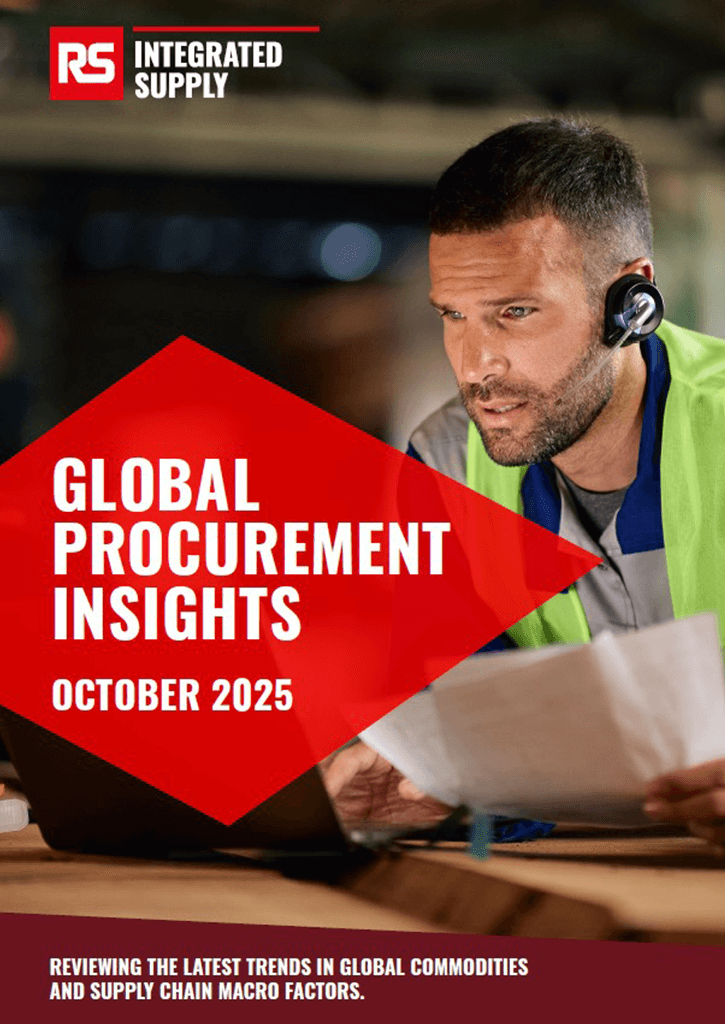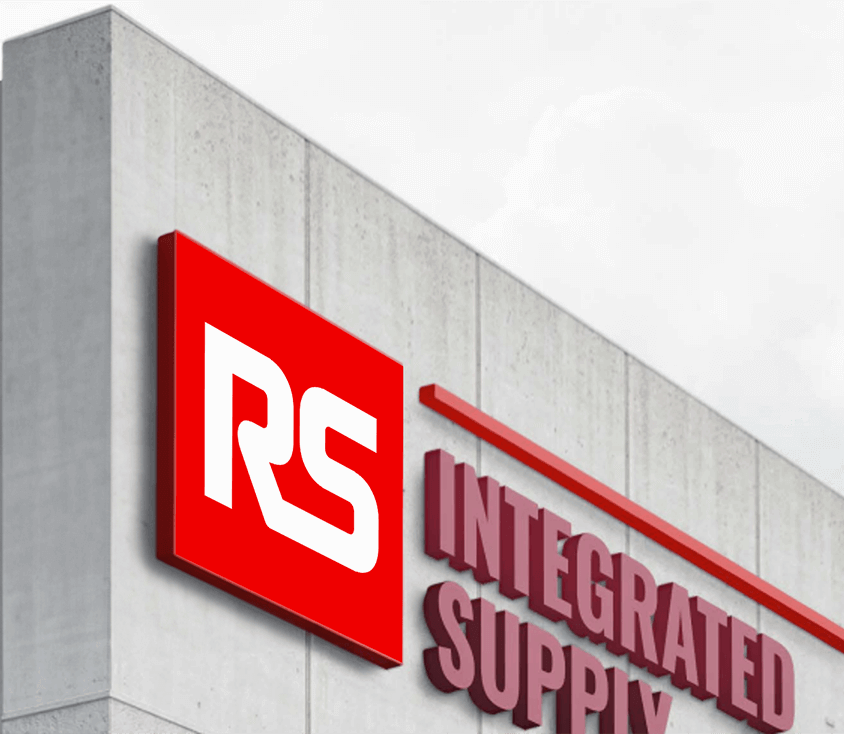Published on
Read time: 7 minutes

One of the main tenets of integrated supply is to reduce costs in the maintenance, repair and operations (MRO) supply chain. Often the focus is on saving money during the purchasing process, for example, negotiating lower rates by offering to buy more products, more frequently. While this approach can be successful, it is difficult to sustain in the long term.
Greater attention, therefore, needs to be paid to other forms of savings and moving away from a piece-price approach. One highly effective strategy is to establish a cost avoidance program to help companies operate more efficiently and save money in the process. In this article, Simon Hilton, Senior Vice President Business Development at RS Integrated Supply, and Martin Wailes, Client Services Manager at RS Integrated Supply, discuss the benefits and impact of cost avoidance programs.
Different ways to measure savings
When an organization works with an integrator, there are different ways to measure savings. “One is hard cash saving. We buy the same product but cheaper by leveraging our volume of sales,” says Wailes.
Another is “reductions in the total cost of procurement,” says Hilton. “There’s a cost to the purchasing cycle, from raising, approving, processing and expediting a purchase order to receiving an invoice, logging it, managing the vendor – even setting up a vendor in the first place. By outsourcing all of that transactional processing to us, there is a saving for the customer.
“The most overlooked savings, however, are those found through cost avoidance programs.”
Far fewer customers set targets for cost avoidance, whether a percentage savings goal or specific metrics assigned to evaluate progress, even though the impact of these programs is potentially as large as unit cost reduction. Every month, for example, Wailes sits down with one client to go through cost avoidance figures. “For the year-to-date, based on the target, we needed to save £1.19 million,” he states. “We’ve actually saved £1.2 million, so we’re £74,000 ahead.
“On capex orders, we’ve managed to save £225,000, which is 11% of spend. Combined, that’s £1.5 million saved in seven months. Year-on-year, it’s around £2.6 to £3 million saved for this client.”
The role of optimizing inventory
At the heart of effective cost avoidance programs is the question “How else can we add value?”, observes Wailes. The answer is typically multifaceted.
A useful starting point is to “organize all of the client’s processes in the most efficient way,” says Hilton. “Often an engineer can’t find a product in the stores so they spend time on non-value tasks such as trying to buy the item themselves, maybe outside of the purchase lanes put in place by the company. Then, because they need it quickly, there will be an additional carriage charge. It’s a waste of time and resources that hinders the overall efficiency of the business.
“We, as an integrator, can have a big impact just by organizing the processes and the stores to make them more efficient. This allows people to be more productive.”
Cleansing and standardizing data also contributes to cost avoidance by providing full visibility of inventory. “You can remove duplication,” explains Hilton. “Identifying when an order doesn’t need to be placed because the item is already in stock is cost avoidance because if we didn’t intervene, they would have unnecessarily spent money,” adds Wailes. “Instead, it’s still in your budget to spend on something else.”
Reducing spend contributes to cost avoidance activities in other ways too. Inventory optimization, for instance, is important. As Hilton points out, “Reducing the amount of inventory reduces the amount spent on parts and the amount of cash sitting on the shelves.”
Rightsizing inventory is, however, an ongoing process rather than a one-and-done task. “We use the intelligence within our systems to have monthly conversations with the client about smart purchasing and mitigating any potential risks,” says Wailes. “We look at the stock evaluation and make suggestions to the client to say increase or decrease an item’s stock levels based on delivery time or changes in usage.
“This is one element of cost avoidance because you’re buying items when you need them rather than holding too much in stock. There’s no cash value but it’s about using the client’s money wisely.”
The value of improving plant efficiency
Value engineering solutions are another aspect of cost avoidance programs. “Our engineering consulting service drives cost avoidance savings too,” states Hilton. “Improving the efficiency and reliability of the plant means fewer breakdowns, therefore less costly downtime or loss of performance, and ensures optimum productivity from existing resources. The amount of cost avoidance can increase significantly when you start looking at reliability as well as the procurement savings.”
At one UK aviation manufacturer, for instance, RS Integrated Supply bought in its value engineering solutions to undertake condition-based monitoring, which the client’s own engineers were exploring but lacked the resources to implement. The team also introduced RS SnapPart™, a mobile app technology that allows users to quickly and accurately identify MRO parts by taking pictures, making the procurement process far more efficient. Together these innovations generated more than £900,000 in cost avoidance for the client.
In another case, a client’s engineers were changing a filter four to five times per week because the roll would run out. “How much does that cost in downtime and engineering time?”, asks Wailes. “We spoke to our suppliers and increased the roll length, meaning the machine is now only down once per week. There’s no immediate cost saving in terms of the product but you’re giving engineers their time back and creating more uptime.”
“Being present in their environment allows us to understand what the client needs,” continues Wailes. “One site had bulletproof glass screens around a machine, which is hugely expensive and has a limited shelf life. Our team got a different supplier involved and they came up with a version that was just as strong and had a far longer shelf life. Making this swap saved the client £250,000 in the first year alone. Plus, there are 100 machines that use this glass so there will be further cost avoidance when these need replacing.
“We get buy-in from the client to recognize these values,” he adds – and the figures are impressive. In the year to December 2023, RS Integrated Supply’s annual cost avoidance for this customer totaled £5.3 million, saving 61% compared to what they would have spent otherwise.
The importance of agreed metrics
What advice do Hilton and Wailes have for organizations looking to embark on a cost avoidance program? First, says Wailes, “Make sure the basics are right and that the standards and services are where they should be. You can’t get past that if they’re not. If they are right, the trust comes next, and it becomes a true partnership.”
Second, agree on the metrics and document a principle that everyone can adhere to “because one of the pitfalls of cost avoidance is differing expectations. Make sure it’s really clear from the beginning what the standards and starting point are, and what the terminology means.”
Hilton concurs. “You need a benchmark of where you were at to measure the effect of what you are going to achieve. It’s not good just starting then saying now you’ve got a benefit; you need that benchmark of current operational performance to make it measurable.”
Adopting a more holistic view
“A lot of people are still unfamiliar with the concept of measuring cost avoidance,” notes Hilton. “That’s why we take a great deal of time to show them the demonstrable improvement it can make to their business.
“Over the last decade, however, more organizations have become aware of the importance of cost avoidance,” he continues, “because over the long term you cannot simply judge savings based on the cost of the product going down. Regardless of how well you can secure a lower price point, there are very few industrial supplies that are cheaper now than they were 10 years ago.
“Companies are therefore taking a more holistic approach towards savings and efficiencies. The MRO supply chain can play a big role in making their manufacturing process as lean as possible and improving plant productivity. Cost avoidance is a key metric for this.”




